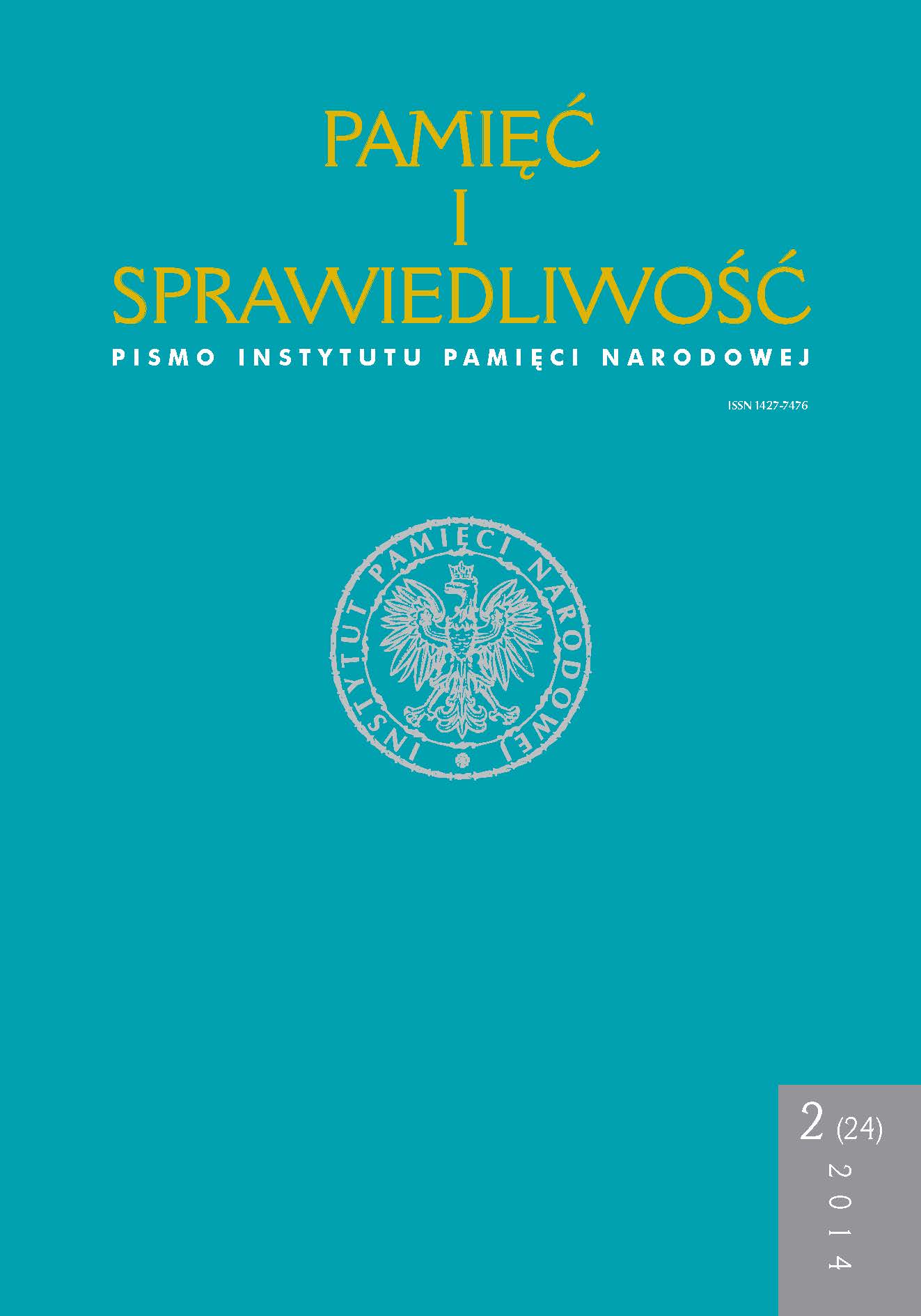The Policy of the Communist Authorities towards Writers and Artists between 1945 and 1989
Remembrance and Justice, Vol. 24 No. 2 (2014), pages: 51-73
Publication date: 2014-12-30
Abstract
The policy of the communist authorities towards writers and artists in the 1945 to 1989
period can be divided into several stages. The first lasted from the end of 1944 to
November 1947. The second stage lasted from November 1947 until the end of 1949, when
socialist realism was forcibly introduced into all areas of cultural life. The third stage ended at
the beginning of 1955, when one could observe a weakening of the authorities (accused
of violations of the socialist rule of law). The whole year 1955 and the turn of 1956/1957
is referred to as the “thaw” period. During Władysław Gomułka’s era (October
1956 –December 1970), the attitude adopted by the authorities towards artists remained mostly
unchanged. It manifested itself as an ideological offensive and repression of any emerging
signs of resistance in that community.
When Edward Gierek was in power as the First Secretary of the Central Committee
of the Polish United Workers’ Party (1970–1980), the policy towards writers and artists
evolved in two stages. The first (1971–1976) was characterized by liberalism and
pragmatism, as part of a regime’s legitimization strategy. During the second stage, lasting from
February 1976 to August 1980, preventive and repressive elements began to prevail in the
position taken towards artists, who increasingly voiced opposition towards the authorities.
Opposition was to be quashed by more stringent censorship, numerous searches,
interrogation of artists and harassment.
In 1980 and 1981, the authorities concentrated on ensuring that the managing bodies
of the artist/writer associations had the right political credentials, although with no
effect. They supported artists with communist party affiliations and unsuccessfully tried to
attract the neutral centre and to exploit it. During the martial law period, the authorities
adopted a repressive policy towards artists, but they failed to put an end to their boycott of
public institutions. The attempt to use artists to legitimize the activities of the authorities
in the perestroika period was only partially successful. Finally, the cultural policy of the
authorities was put aside altogether after the political changes of 1989.
Most read articles by the same author(s)
- Stanisław Bereś, Jerzy Brukwicki, Andrzej Chojnowski, Emilian Kamiński, Marek Nowakowski, Zygmunt Staszczyk, Sebastian Ligarski, Patryk Pleskot, Twórcy o twórcach w PRL , Remembrance and Justice: Vol. 24 No. 2 (2014)
- Sebastian Ligarski, The Creators, the PRL Authorities, the Security Service. Report on the State of Research, 2014–2022 , Remembrance and Justice: Vol. 40 No. 2 (2022)
- Marta Marcinkiewicz, Sebastian Ligarski, Editorial , Remembrance and Justice: Vol. 40 No. 2 (2022)
- Sebastian Ligarski, Parliament Election Campaign in Communistic Poland on the Example of Lower Silesia Press in 1972–1976–1980 , Remembrance and Justice: Vol. 11 No. 1 (2007)
- Sebastian Ligarski, [Recenzja] Polska 1944/45–1989. Studia i materiały, t. 6: Warsztat badawczy, Instytut Historii PAN, Warszawa 2004, ss. 277 , Remembrance and Justice: Vol. 8 No. 2 (2005)
 Język Polski
Język Polski
 English
English
 Deutsch
Deutsch
 Français (France)
Français (France)
 Italiano
Italiano
 Русский
Русский


 PDF (Język Polski)
PDF (Język Polski)
